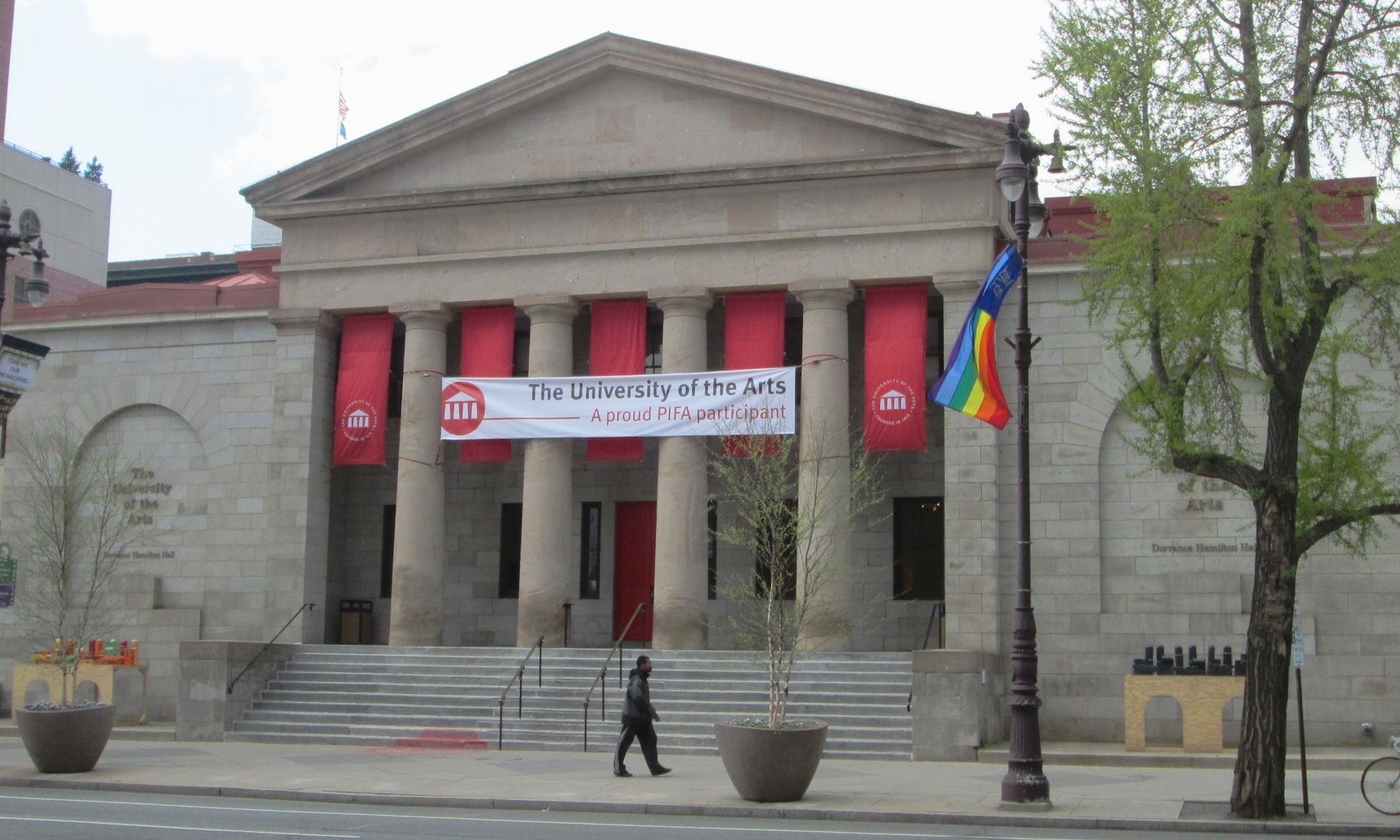Dorrance Hamilton Hall, one of the University of the Arts' buildings in Philadelphia's Center City neighbourhood Photo by Beyond My Ken, via Wikimedia Commons
Following its abrupt closing on 7 June, the University of the Arts (UArts) in Philadelphia filed for chapter seven bankruptcy on 13 September. The filing came after negotiations to save the school via a merger with Temple University broke down.
According to its bankruptcy filing in Delaware, the school has liabilities of between $50m and $100m and assets valued in the same range. The document also reveals that the university’s lawyer, Richard G.Placey of the Delaware-based firm Montgomery McCracken Walker and Rhoads, has already been paid over $1m in legal fees.
Going through the bankruptcy process will eventually allow the university to sell several valuable real estate holdings it owns in Philadelphia’s City Center neighbourhood, which are estimated to be worth around $87m. From the sale of these properties, the university hopes to make good on its $46m bond debt.
On 31 May, UArts board chair Judson Aaron and president Kerry Walk announced that the 150-year-old university would close in seven days. They cited low enrollment, financial issues and increased costs as the reasons. This resulted in several class action lawsuits that have been brought against the university, allegations of unfair labour practices and an ongoing investigation by Pennsylvania’s attorney general, Michelle Henry. The union that represents both staff and faculty at the university is also suing the university for failing to negotiate with their workers for severance.
“The board of trustees at UArts, led by board chair Jud Aaron, has chosen at every turn to obfuscate the truth and forestall all consequences of their disastrous mismanagement of the university,” a spokesperson for the union said in a statement. “This filing comes as former students, staff and faculty continue to struggle with the damage done to their education and careers, and while the UArts board has neglected its legal, contractual and moral obligation to negotiate severance payments for workers affected by UArts’ collapse. We will fight to make [union] members whole using every legal avenue available—the priority should not be bondholders or real estate developers, but the flesh-and-blood communities whose lives were upended by this disaster.”
The university’s abrupt closure came four months after a contentious bargaining process between the union and administrators that went on for over a year resulted in a contract. The union “is continuing to support members through unemployment workshops, healthcare access workshops and solidarity fund payments”, the union spokesperson told The Art Newspaper. “And we're working with our legal support and political allies to continue to fight for [Worker Adjustment and Retraining Notification Act] and severance payments for our displaced members.”
Officials at UArts could not be reached for comment as of press time.
The closure of Uarts comes at a time when US universities face a host of pressures, from falling enrolment and rising costs to increased scrutiny over free speech and campus protest issues. Several art colleges and universities have either merged with other institutions or have shuttered entirely in recent years. Most recently another Philadelphia institution, the Pennsylvania Academy of Fine Arts, announced it will cease all degree-granting activities in 2025. And in 2023, after years of financial struggles, the storied San Francisco Art Institute closed and filed for bankruptcy. Earlier this summer, leaders at the California College of the Arts revealed that the institution is facing a $20m deficit and may need to make drastic changes to regain its financial footing.
Other art schools have managed to avoid total collapse by merging with larger universities. Earlier this year, the Vermont College of Fine Arts announced a novel solution to its financial straits: it will merge with the California Institute of the Arts, a university 3,000 miles away. The School of the Museum of Fine Arts in Boston became part of Tufts University in 2016. In 2014, the Corcoran College of Art and Design dispersed much of its permanent collection and its academic programmes became part of George Washington University.

